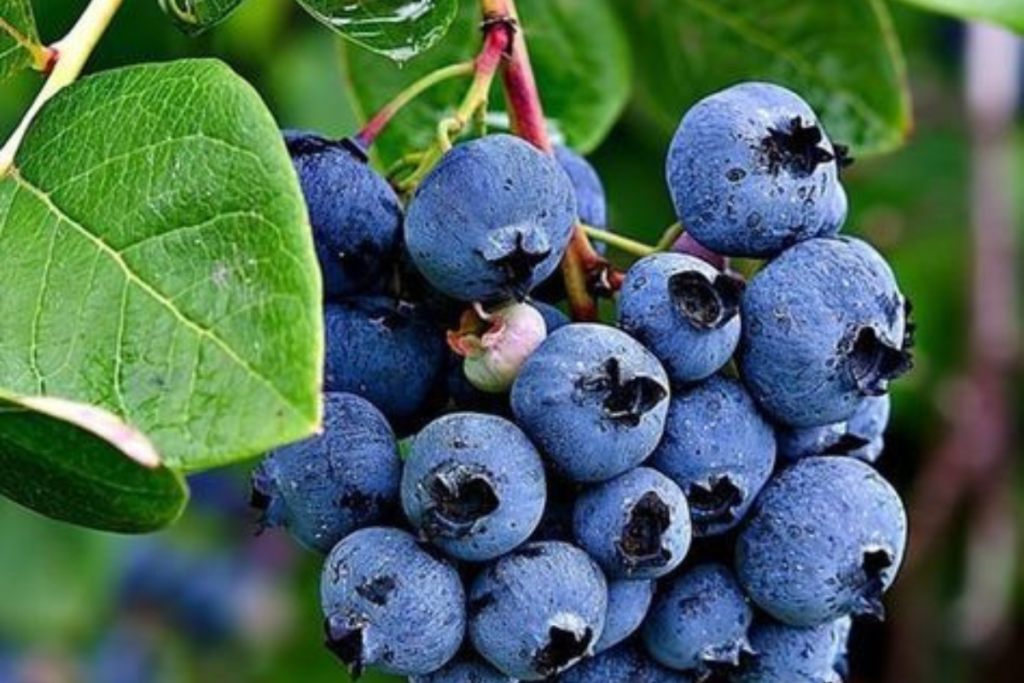Blueberry bushes are a fantastic addition to any garden, providing delicious fruit and vibrant foliage. However, to ensure healthy growth and bountiful harvests, regular pruning is essential. Here’s a comprehensive guide on how to prune your blueberry bushes effectively.
Why Prune Blueberry Bushes?

- Increase Fruit Production:
- Pruning encourages new growth, which produces more and better-quality berries.
- Enhance Plant Health:
- Removing dead or diseased wood improves airflow and reduces the risk of pests and diseases.
- Control Plant Size:
- Pruning keeps the bush manageable, making it easier to harvest fruit.
- Extend Plant Longevity:
- Regular maintenance promotes a stronger, longer-lasting plant.
When to Prune Blueberry Bushes
- Dormant Season:
- Prune in late winter or early spring, before new growth begins.
- This is the ideal time to see the structure of the plant and make precise cuts.
- Summer Touch-Ups:
- Light pruning can be done after fruiting to remove any damaged or weak branches.
Tools You’ll Need
- Pruning Shears:
- Use sharp, clean pruning shears for small branches.
- Loppers:
- For thicker branches, loppers provide better leverage.
- Gloves:
- Protect your hands from scratches while working.
- Sanitizing Solution:
- Clean tools with rubbing alcohol between cuts to prevent disease spread.
Steps for Pruning Blueberry Bushes
- Assess the Bush:
- Start by examining the plant for dead, diseased, or damaged wood.
- Identify the oldest canes (branches) that need removal to make way for new growth.
- Remove Dead and Diseased Wood:
- Cut back any gray, brittle, or visibly damaged branches to the base of the plant.
- Thin Out Older Canes:
- Blueberry bushes produce the best fruit on younger canes (1-3 years old).
- Remove 1-2 of the oldest canes (over 5 years old) each year to encourage new growth.
- Shape the Bush:
- Trim back branches that cross or rub against each other to maintain an open, vase-like shape.
- This shape improves light penetration and airflow.
- Tip Pruning:
- Cut back the tips of long, spindly branches to encourage branching and fruit bud formation.
- Inspect for Fruit Buds:
- Leave branches with plump, rounded fruit buds intact while removing thin, weak growth.
Pruning by Plant Age
- Young Plants (1-3 Years):
- Focus on shaping the plant and encouraging strong, upright growth.
- Remove any weak or horizontal branches.
- Mature Plants (4+ Years):
- Perform annual maintenance pruning to remove older canes and maintain balance between new and old growth.
- Overgrown or Neglected Plants:
- Rejuvenate by cutting back 1/3 of the oldest canes to the ground each year over a 3-year period.
Common Pruning Mistakes to Avoid
- Over-Pruning:
- Removing too much growth can stress the plant and reduce fruit production.
- Under-Pruning:
- Neglecting to prune leads to overcrowded bushes and smaller, lower-quality berries.
- Improper Cuts:
- Always make clean cuts just above a bud or branch junction to promote healing.
Post-Pruning Care
- Fertilize:
- Apply a balanced, acidic fertilizer in early spring to support new growth.
- Mulch:
- Add a 2-4 inch layer of mulch around the base to retain moisture and suppress weeds.
- Water:
- Keep the soil evenly moist, especially during the growing season.
- Monitor for Pests and Diseases:
- Inspect the plant regularly and address issues promptly.
Final Thoughts
Pruning blueberry bushes may seem daunting at first, but with practice, it becomes a straightforward and rewarding task. Regular pruning not only keeps your plants healthy but also ensures abundant harvests of sweet, juicy berries. Follow these steps, and you’ll enjoy a thriving blueberry patch for years to come!
